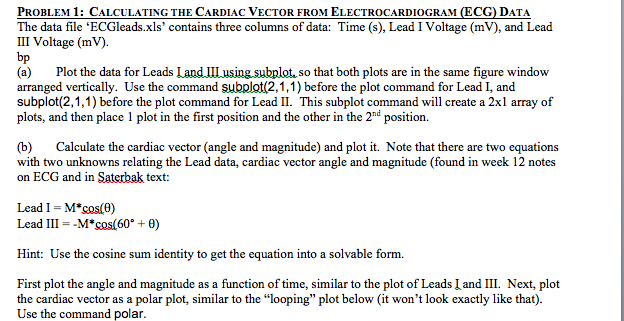Answered step by step
Verified Expert Solution
Question
1 Approved Answer
Please include the MATLAB script. I appreciate it so much! I have inluded the values of the ECG data needed . Time(s) 0.01 0.02 0.03


Please include the MATLAB script. I appreciate it so much! I have inluded the values of the ECG data needed .
Time(s)
| 0.01 |
| 0.02 |
| 0.03 |
| 0.04 |
| 0.05 |
| 0.06 |
| 0.07 |
| 0.08 |
| 0.09 |
| 0.1 |
| Lead I (mV) |
| 0.00915 |
| 0.01464 |
| 0.009 |
| 0.01968 |
| 0.02914 |
| 0.04943 |
| 0.05645 |
| 0.07415 |
| 0.06851 |
| 0.06134 |
| Lead III (mV) |
| -0.06866 |
| -0.06989 |
| -0.06882 |
| -0.0589 |
| -0.07126 |
| -0.07568 |
| -0.05997 |
| -0.05905 |
| -0.03662 |
| -0.07156 |
Step by Step Solution
There are 3 Steps involved in it
Step: 1

Get Instant Access to Expert-Tailored Solutions
See step-by-step solutions with expert insights and AI powered tools for academic success
Step: 2

Step: 3

Ace Your Homework with AI
Get the answers you need in no time with our AI-driven, step-by-step assistance
Get Started


